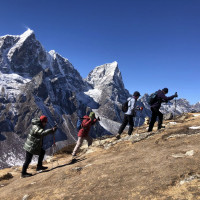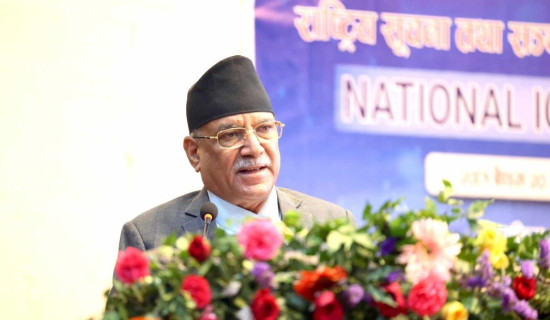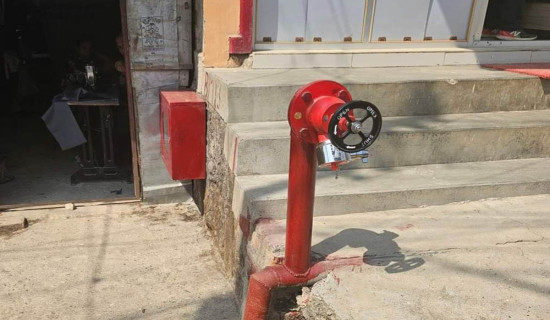- Thursday, 2 May 2024
Prospects Of Berry Cultivation In Nepal
During my stay in the USA, I used to visit the grocery stores with my daughter. I was surprised to see that one can consume fruits like mangoes, oranges, apples, grapes, avocados, bananas, and berries imported from various countries like Mexico, Costa Rica, Honduras, Chile, Guatemala, Ecuador, Argentina, and Canada, apart from US products. Due to this, people can consume different types of seasonal fruits fresh at relatively cheaper prices almost year-round in the USA.
This raised curiosity in me about fruit cultivation, particularly berries’ cultivation, which made me visit two orchards in Glastonbury, Connecticut. One day we visited Scott’s Orchard and Nursery, which had invited fruit lovers by advertising “Pick Your Own Blueberry." We not only enjoyed tasting a lot of blueberries free of charge but also picked up about two baskets of blueberries to bring home. It was pleasant to stroll around the nursery, particularly the blueberry cultivation area, which stretched over a vast area. It seemed bizarre for me to view the whole blueberry area covered with a net from above to protect the blueberries from birds.
Next time, we visited Dondero Orchards in Glastonbury to pick strawberries, accompanied by my spouse, one of the agricultural scientists associated with ‘Nepal Plant Disease and Agro Associate’ (NPDA), Kathmandu. She needs to visit the strawberry farms frequently to provide consultancy on preventing strawberry diseases. Besides picking, we also eat strawberries to our hearts content, free of charge. We paid for what we plucked from the packets supplied by them. My spouse, besides plucking strawberries, inquired about the techniques and problems of strawberry cultivation, including diseases and remedies, with a view to enhancing her knowledge about strawberry cultivation and helping farmers in Nepal.
The picking of blueberries in the USA reminded me of my childhood in my hometown, Dolakha. The blueberry called ‘Chutro’, and the raspberry called ‘Yaselu’ in Nepali could be found and consumed free of cost plucking from the plants found elsewhere growing in their wild form in the nearby forests and on the banks of the streams. A blackberry called ‘Kalo Yeselu’ in Nepali was found only in the forest known as “Chathali”. In childhood, we, at times, used to bunk classes in school to go to the forest to pluck juicy blackberries from their thorny vines.
In the course of evolution, human beings have domesticated a variety of crops, including grains, fruits, and vegetables, in order to fulfil their needs. What puzzled me is that some fruits that we consume in wild form today in our rural areas have already been domesticated or brought to commercial farming in the USA. This made me conclude that farmers can cultivate berries commercially in Nepal as well, which is bound to yield lucrative returns.
Health benefits
There are mainly four types of berries: blueberry, blackberry, raspberry, and strawberry. Raspberry and strawberry are red-coloured, whereas blueberry and blackberry are blue and black-coloured, respectively, as their names suggest. However, in Nepal, raspberries are yellow-coloured. Nutritional experts are of the opinion that all fruits are juicy, delicious, and nutritious. However, some fruits have high levels of vitamins, minerals, fibre, antioxidants, and protective plant compounds. Berries fall into this category, whose consumption provides enormous health benefits such as reducing the risk of certain diseases like heart disease, cancer, diabetes, depression, and anxiety.
According to nutritional experts, berries, irrespective of their type, provide these common health benefits to the people consuming them. Berries are rich in vitamins C and K, manganese, minerals, fiber, and are antiviral and antibacterial. Due to their protective plant compounds, they are useful to enhance digestion, prevent heart disease and stroke by lowering high blood pressure, and protect against obesity. Besides, they help maintain cardiovascular and oral health, prevent cancer, and boost brain power and memory. They are also considered anti-inflammatory and anti-diabetic. Blueberries are called a “superfood” because of their qualities of being tasty, low in calories, and loaded with nutrients.
Prospects in Nepal
In Nepal, we often hear the news about strawberry cultivation. Farmers in Nepal started strawberry cultivation a few years ago, even if on a small scale. Strawberry cultivation has been started in various parts of the country, including Kakani, Palung, and Samichowk. The ‘Nepal Plant Disease and Agro Associate’ (NPDA) has been providing consultancy and training to the strawberry farmers of Kakani and other parts of the country. The agricultural scientists Dr. Hira Kazi Manandhar, Dr. Ram Devi Timila, Sarala Sharma, Gyanu Manandhar, and Sharada Joshi associated with the NPDA have been relentlessly providing necessary guidance to the farmers involved in strawberry cultivation. However, so far, cultivation of blackberries, raspberries, and blueberries has not been started. We sometimes hear about the use of raspberry and blueberry picking from the forests in winemaking, but not about blackberries. Picking berries in their wild form is neither sufficient nor can it be of superior quality. Hence, it is necessary to encourage the farmers to initiate berries’ cultivation.
Self sufficiency
In recent years, even in Nepal, fruits have been imported from countries like the USA, South Africa, Egypt, Mexico, Thailand, and Uganda, apart from neighbouring countries like India and China. The budget for fiscal year 2020/21 had a policy to make the country self-sufficient in fruits within three years. However, that is easier said than done. Nepal still heavily relies on fruit imports from other countries. The Economic Survey published by the government reveals that Nepal has to spend millions of rupees every year on the imports of fruits to meet the growing demands of consumers. For example, in fiscal year 2022/23, Nepal’s import of fruits constituted about 62 per cent of the total fruit consumption. In other words, only 38 per cent of the domestic demand was met by domestic production. With the increase in purchasing power of people, the fruit consumption habits of people, particularly in urban areas, have remarkably increased. Fruits are used not only as a supplement to the daily diet but also in offering to the deities and giving gifts to relatives while visiting their houses. This shows that there is a wider market for fruits in Nepal. Berries have multiple uses. They are useful not only for consumption in their natural form and as salad but also to be used as a raw material in the production of juice, wine, jam, cake, etc. Some people in the eastern hills have already been producing juice and wine by using blueberries and raspberries, though in very limited quantities, by collecting them from the forests.
Suitable climate
Berries’ cultivation is also favourable from a climatic viewpoint. Berries take different shapes after they are grown. Blueberries and raspberries become standing plants. Blackberries’ plants take on vine shapes like grapes, and strawberries are grown on the ground like potato plants. They prefer a cool climate with a long, frost-free growing season and well-draining soil that is rich in organic matter. Berries need plenty of sunlight to grow and produce fruit, and they typically require at least six hours of direct sunlight per day. This indicates that the hilly regions of the country are suitable for their cultivation from a climatic viewpoint. It is because they are profusely found in the hilly areas of their natural environment during the season. Hence, farmers in Nepal should be encouraged to initiate the domestication and commercial cultivation of berries like raspberry, blueberry, and blackberry, besides strawberry.
(The author is a professor of Bussiness Economics.)





-square-thumb.jpg)











